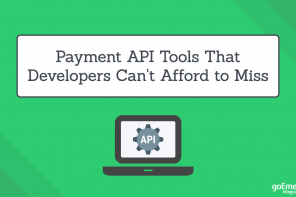Businesses today struggle to continually upgrade their technology to keep up with the evolving needs of the consumer. What is an effective solution to repeatedly make technology upgrades without disrupting your workflow? Consider integrating a payment API.
In the payments ecosystem, an API has become a powerful three-letter buzzword that many merchants do not fully understand. Although you don’t need to be an expert, what you should know is that the API economy is heating up quickly, and those who want to stay ahead of the curve must embrace payment APIs into their future software integration plans.
Here are five major reasons why you should consider integrating a payment API.
Payment API Benefit No 1: Enhanced Security
Security should be the number one consideration when integrating any solution. A reputable payment API partner is PCI DDC complaint, which means your business will be compliant because of working with that partner. This is essential for companies who currently accept or are planning on accepting credit card payments. The right payment API partner also uses point-to-point encryption (P2PE), or tokenization, to secure payment credentials and transaction details. Worry less about your PCI scope and rest easy at night knowing your software and payment systems are safe.
With the risk of a security breach around every corner, businesses need to focus first on onboarding partners who understand the importance of having the latest and greatest security and compliance features available in the marketplace.
Payment API Benefit No 2: Speedy Development
Upgrading your software and systems shouldn’t waste time, resources and money. A payment API can eliminate that headache by reducing the number of processes that are often redundant for your business. Instead of manually upgrading systems when integrating new features, the right partner will streamline the process for you.
This includes providing user-friendly, flexible payment integration methods so that, regardless of how sophisticated your team is, accepting payments online, in software, or in an app is a quick, easy and painless process. Payment APIs often come with toolkits, code and the ability to tap into a team of experts who can help make sure the process runs smoothly.
Payment API Benefit No 3: Added Convenience
For businesses looking to streamline their payment processing, integrating a payment API is the place to start. This is an added convenience for both the employee and customer side of the payment equation. From a functionality standpoint, business owners will find added convenience with a payments system that’s easier to incorporate basic, day-to-day functions. A payment API also allows for payments to be integrated seamlessly into other connected software solutions.
Instead of thinking of payment processing in isolation from the rest of your businesses core functions, realize that payments are truly a core aspect of the overall customer service experience. Businesses need to think more holistically about the role of payments in helping build brand value among their core customer base.
Payment API Benefit No 4: Advanced Features
The world of payments has dramatically advanced in the past few years. It’s easy for businesses to fall behind the latest trends. With a payment API partner by your side, there is no longer any need for concern. Instead, a payment API can help tailor your payment options to what your customers want. With a payment API, businesses are able to add features like customer autopay, easier refunds and quicker payment options with easy-to-integrate buttons.
Payments today are more sophisticated than ever. New and innovative digital payment methods have the ability to transform the customer experience. Integrating a payment API allows businesses to fully take advantage of sophisticated tools that help your customers complete their payment faster and easier than traditional, legacy payment systems.
Payment API Benefit No 5: Boost Revenue
Most business owners may think a payment API is only good for making the payment process smoother. The added perk to this that is often overlooked is the revenue opportunities. A smoother payment integration helps a business streamline its daily practices, which can directly impact the revenue flow. A payment API provides business the necessary tools to onboard a dynamic payments experience into your mobile app, POS software or eCommerce site — helping all your revenue streams remain in sync with each other.
This feature helps businesses attract more customers while providing you with a more well-rounded understanding of how your customers are shopping, which channel they like the most and what payment methods they prefer. It also provides your business access to real-time data on how your products and services are selling. A payment API can also integrate new payment methods like subscription and recurring payment methods — both of which provide a path to secure more regular revenue streams. Not only can a payment API allow your customers to pay and interact with your business through multiple, diverse channels, it can create more routes to attract customers and boost revenue. That’s a win-win for everyone.




